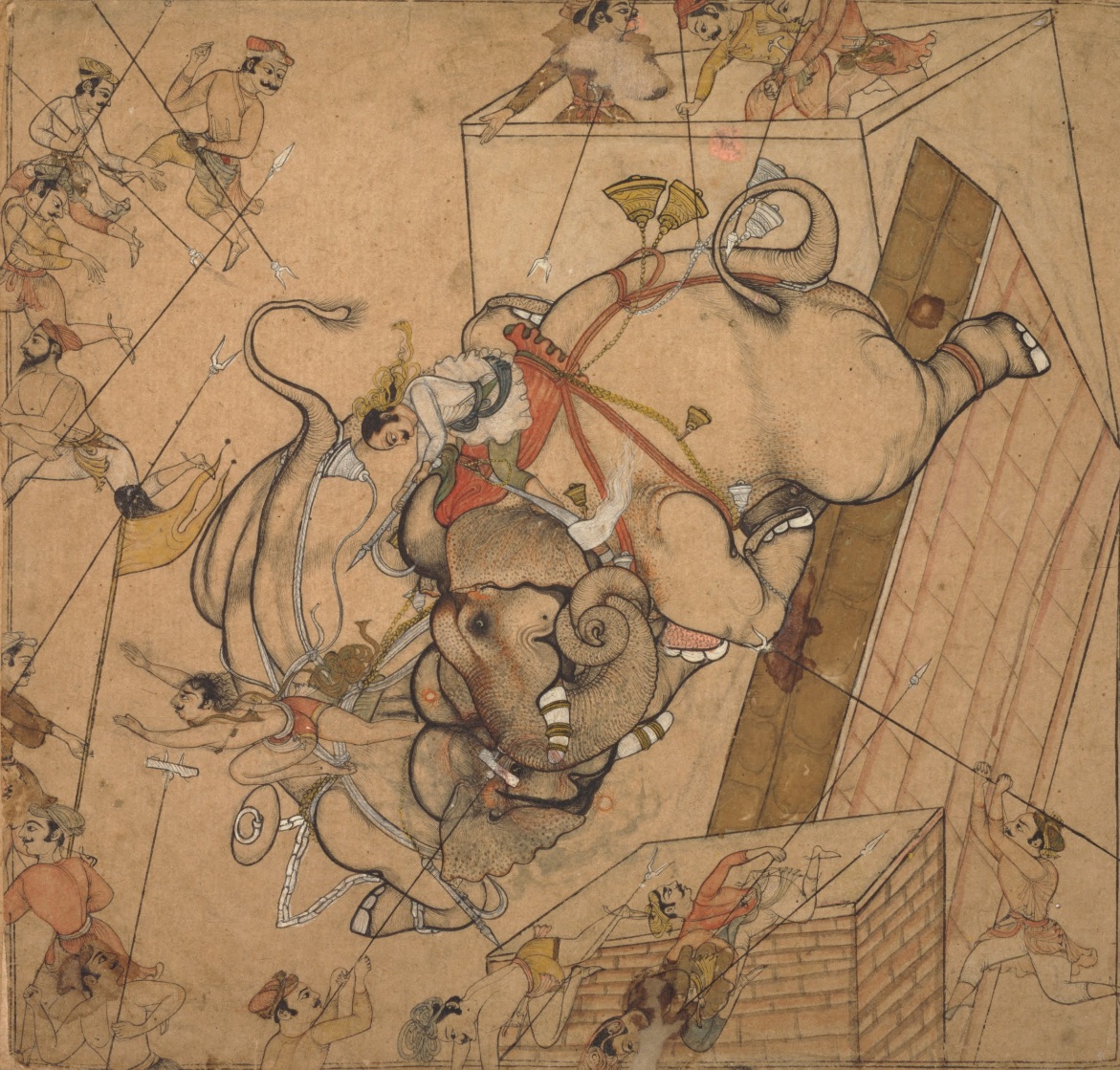
anonyme - combat d'elephants
Elephant combats in Kota took place in the palace courtyard, while the ruler and his courtiers looked down from a high balcony. An elephant was placed to either side of a short wall, against which they would batter until the strongest vaulted the wall to finish off its opponent. In this drawing, the two elephants collide in midair. The weaker beast falls to the ground, his body an explosion of flattened parts. The impact of this jarring encounter has sent the elephant handlers flying and they circle helplessly at the outer edges of the page. Although his name is not known, the artist to whom this drawing is attributed has been dubbed the "Master of the Elephants" because his sure and lively brushwork captures the essence of both the elephants' power and their baggy skins.
Elephant combats in Kota took place in the palace courtyard, while the ruler and his courtiers looked down from a high balcony. An elephant was placed to either side of a short wall, against which they would batter until the strongest vault ...



.jpg)
.jpg)
.jpg)
.jpg)





